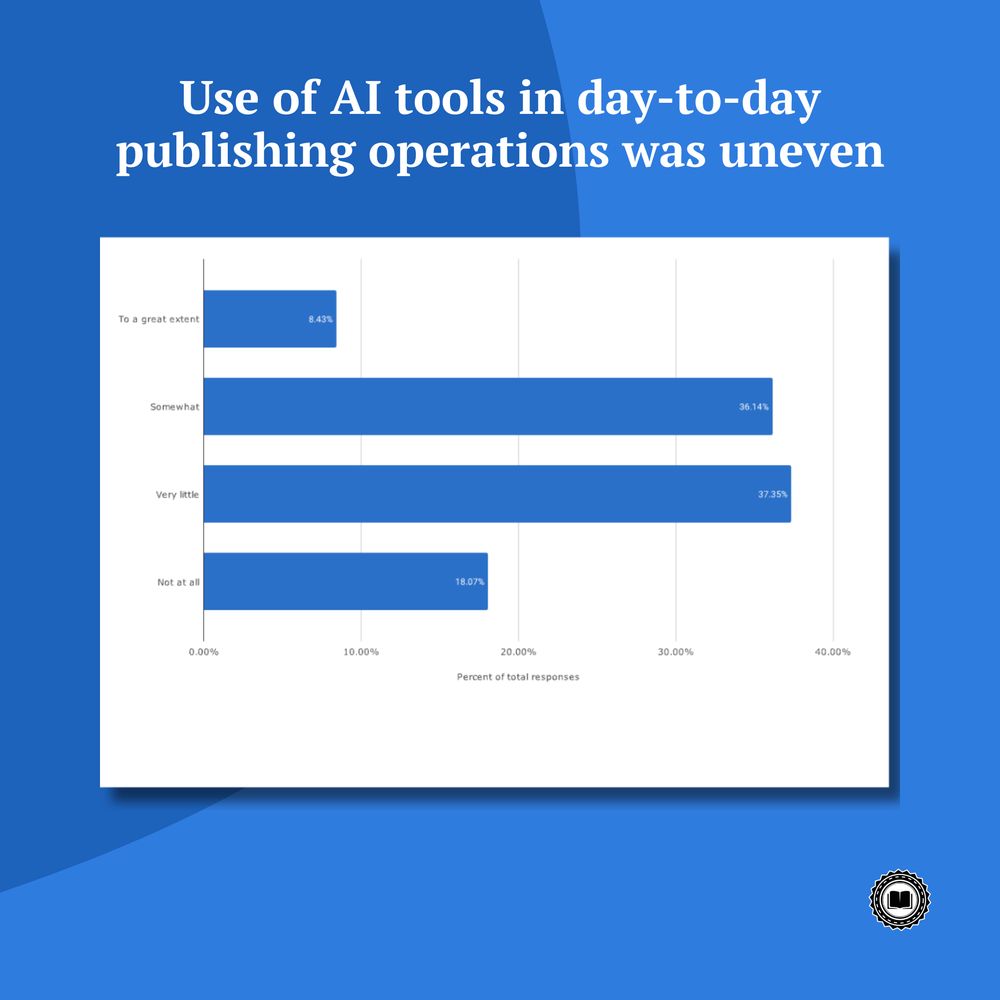
Law review updates: @scholasticalr.bsky.social
For product details, visit our website: scholasticahq.com
We’d love to know if you’re a Scholastica user on Bluesky! Drop us a line in the comments and we'll add you.
go.bsky.app/B3b5HYx
Delve into our growing collection of free resources for publishers and editors. From in-depth eBooks to on-demand webinars and more! buff.ly/Yx2FIJA
#ScholarlyPublishing

Delve into our growing collection of free resources for publishers and editors. From in-depth eBooks to on-demand webinars and more! buff.ly/Yx2FIJA
#ScholarlyPublishing
Learn how @researchorgs.bsky.social and @orcid.org's systems interact and complement each other enhancing data quality and adding valuable trust markers to researchers’ records. buff.ly/daQAyWQ

Learn how @researchorgs.bsky.social and @orcid.org's systems interact and complement each other enhancing data quality and adding valuable trust markers to researchers’ records. buff.ly/daQAyWQ
Sneak peek into the "Tech Needs of Small and Medium Journal Publishers" report from Scholastica and @maverick-os.bsky.social: buff.ly/IyAwSWy

Sneak peek into the "Tech Needs of Small and Medium Journal Publishers" report from Scholastica and @maverick-os.bsky.social: buff.ly/IyAwSWy
Here's a preview. Learn more in this blog post: buff.ly/M7zvzPj
Here's a preview. Learn more in this blog post: buff.ly/M7zvzPj
@scholarlykitchen.bsky.social chefs @lyconrad.bsky.social, @roohighosh.bsky.social, @irfanullah.bsky.social, @lisalibrarian.bsky.social, Stephanie Lovegrove Hansen, Dianndra Roberts, and Tim Vines share theirs here:

@scholarlykitchen.bsky.social chefs @lyconrad.bsky.social, @roohighosh.bsky.social, @irfanullah.bsky.social, @lisalibrarian.bsky.social, Stephanie Lovegrove Hansen, Dianndra Roberts, and Tim Vines share theirs here:
Watch here: buff.ly/LHTmH94
Watch here: buff.ly/LHTmH94
Quick 🧵 of key findings from Scholastica and @maverick-os.bsky.social's new survey report (we'll link to it below!)

Quick 🧵 of key findings from Scholastica and @maverick-os.bsky.social's new survey report (we'll link to it below!)
Scholastica's Peer Review System now supports transferring submissions between journals within a portfolio, for cases when a manuscript seems better suited to another journal in the publisher family (aka cascading submissions).
Learn more: buff.ly/LoiyGEH
#ScholarlyPublishing
Scholastica's Peer Review System now supports transferring submissions between journals within a portfolio, for cases when a manuscript seems better suited to another journal in the publisher family (aka cascading submissions).
Learn more: buff.ly/LoiyGEH
#ScholarlyPublishing
We cover current best practices in this new blog post guide: buff.ly/qNQOi2a
#ResearchIntegrity #SciPub

We cover current best practices in this new blog post guide: buff.ly/qNQOi2a
#ResearchIntegrity #SciPub
Remember, your submission form is your friend! 💥
Learn how leveraging form requirements and validations can help you streamline technical checks in this blog post: buff.ly/CTSUmSw

Remember, your submission form is your friend! 💥
Learn how leveraging form requirements and validations can help you streamline technical checks in this blog post: buff.ly/CTSUmSw
Learn more in this blog post: buff.ly/HwvK1sF
#SciencePublishing #ResearchIntegrity
Learn more in this blog post: buff.ly/HwvK1sF
#SciencePublishing #ResearchIntegrity
FT: David Armstrong at ACS, @rouhiroo.bsky.social @aip-publishing.bsky.social, Alessio Bolognesi at eLife Science, Melissa Junior @asm.org & @sybilleg.bsky.social at ACS
#OpenAccess #ScholComm

FT: David Armstrong at ACS, @rouhiroo.bsky.social @aip-publishing.bsky.social, Alessio Bolognesi at eLife Science, Melissa Junior @asm.org & @sybilleg.bsky.social at ACS
#OpenAccess #ScholComm
The report details the results of a global survey of independent publishers with under 1,000 employees on their current tech stacks and future priorities. buff.ly/s9i6qW5

The report details the results of a global survey of independent publishers with under 1,000 employees on their current tech stacks and future priorities. buff.ly/s9i6qW5
Scholastica's @danielle-josephine.bsky.social caught up with @openaccessmaven.bsky.social at the #GatesFoundation, for a water cooler chat on the topic.
Watch it here: buff.ly/fIHHKdg
#OpenAccess #ScholComm
Scholastica's @danielle-josephine.bsky.social caught up with @openaccessmaven.bsky.social at the #GatesFoundation, for a water cooler chat on the topic.
Watch it here: buff.ly/fIHHKdg
#OpenAccess #ScholComm
@maverick-os.bsky.social's Lynsey Haire covers takeaways from an @easeeditors.bsky.social panel, which spanned workflow structures, submission screening tools/processes, and reviewer engagement.

@maverick-os.bsky.social's Lynsey Haire covers takeaways from an @easeeditors.bsky.social panel, which spanned workflow structures, submission screening tools/processes, and reviewer engagement.
As hard as it is for authors to receive adverse manuscript decisions, it can be equally challenging for editors to send them. Quick 🧵 with tips to help 👇
As hard as it is for authors to receive adverse manuscript decisions, it can be equally challenging for editors to send them. Quick 🧵 with tips to help 👇
We have tips to help: buff.ly/LbbKesd

We have tips to help: buff.ly/LbbKesd
In short, YES! We offer many options.
We show examples in this lookbook. 👀⬇️ buff.ly/6pVTjbT

In short, YES! We offer many options.
We show examples in this lookbook. 👀⬇️ buff.ly/6pVTjbT
Learn best practices from experts in this on-demand webinar FT speakers from @crossref.bsky.social Similarity Check, Origin Editorial, @plosone.org, C0PE & more: buff.ly/oyLnc8Y
#ResearchIntegrity

Learn best practices from experts in this on-demand webinar FT speakers from @crossref.bsky.social Similarity Check, Origin Editorial, @plosone.org, C0PE & more: buff.ly/oyLnc8Y
#ResearchIntegrity
What would you add? Let us know in the comments 👇

What would you add? Let us know in the comments 👇
Learn more in this past interview with @telescoper.bsky.social, EIC of @ojastro.bsky.social, and Christian Gogolin, founding editor of @quantum-journal.bsky.social: buff.ly/xD2fSen

Learn more in this past interview with @telescoper.bsky.social, EIC of @ojastro.bsky.social, and Christian Gogolin, founding editor of @quantum-journal.bsky.social: buff.ly/xD2fSen
Learn more in this interview with Deborah McNamara @zookeepermc.bsky.social: buff.ly/q75Ww5W

Learn more in this interview with Deborah McNamara @zookeepermc.bsky.social: buff.ly/q75Ww5W
Learn about the program and success stories here: buff.ly/SJUpea8

Learn about the program and success stories here: buff.ly/SJUpea8
Learn about @projectmuse.bsky.social’s S20 Program, started in 2025, in this interview with Journals Director at @hopkinspress.bsky.social Bill Breichner: buff.ly/y5cLyAP

Learn about @projectmuse.bsky.social’s S20 Program, started in 2025, in this interview with Journals Director at @hopkinspress.bsky.social Bill Breichner: buff.ly/y5cLyAP
We'll showcase examples from this new blog throughout the week: buff.ly/NhdyEDR
What would you add?

We'll showcase examples from this new blog throughout the week: buff.ly/NhdyEDR
What would you add?

